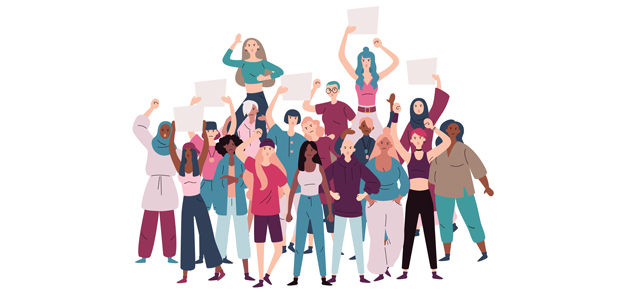
Are you talking to the women in your audience?
Every brand thinks they can turn on the charm to impress the ladies, but the opposite is often true. While an enormous 89% of women control daily shopping, the overwhelming majority (a whopping 91%) feel advertisers simply don’t understand us. Shocking, I know.
So, we don’t always get to see the representation we want. No big deal, right? Far from it. The lack of positive female role models in adverts has very real and far-reaching consequences for women worldwide.
This scarcity of relatable and compelling female representation is a major driving force behind mental health and self-esteem issues. Almost nine in ten women (88%) say they compare themselves to the images and bodies they see in the media. Most damningly, more than half claim they feel less confident about themselves as a result. The issue is especially prevalent amongst younger women and girls.
If marketing is supposed to make women feel empowered and good about themselves, why do so many adverts make them feel awful?
Positive representation is not only a basic and understandable request. It impacts long-term brand relationships. In fact, women are more likely to remain more loyal to a higher number of brands than men - if they feel rewarded and respected.
A watershed example of positive attitudes to women in advertising was Dove’s ‘Real Beauty’ campaign. In 2004 Dove made Real Women, of all shapes and sizes, the focus of their messaging. Not only is this campaign still looked on favourably today, but it led directly to a 62% increase in sales since launch.
However, the biggest takeaway of ‘Real Beauty’ is the legacy it left behind. For 15 years, Dove has instilled the notion of self-love and positive body image in a generation of women and girls. Subsequent Dove campaigns touched on similar themes, such as #BeautyBias and Women Get Told. Each takes aim at issues widely seen as systemic in gender discussions and society.
Dove is not the only brand to have embraced this change either. Today, we see more and more messaging focussed on female liberation and empowerment. In fact, nearly half of women (41%) believe that female representation in advertising has improved, which is a fantastic leap forward.
But what is the underlying cause of this change? In short? Inclusion.
Today, women make up roughly 65% of the marketing industry’s workforce and 30% of senior management roles in the larger economy. Giving women a seat at the table ensures fresh ideas are heard while new perspectives are seen.
Though much has changed since 2004, have things changed enough? The answer is an emphatic no. Sorry.
Currently, just seven percent of women say representation in advertising has improved significantly. And this is to say nothing of sexual objectification. Despite four in ten women (36%) believing objectification has decreased over the years, a sizable 48% feel it’s the same, if not worse.
Is this because most (62%) of adverts are still written by men? Is it because only 15% of creative directors are female? Or are these statistics both symptomatic of a deeper problem?
Earlier this year, the industry was rocked (though not shocked) by hundreds of accounts detailing sexual assault, harassment and discrimination against women in the industry. The blog written by senior marketer Zoe Scaman titled ‘Mad Men, Furious Women’ laid bare the scale of the problem.
We can say marketing has made significant progress when dealing with and speaking to women over the last two decades. However, the structural power imbalances still remain. We (from the C-Suite to the Consumer) must do more to have women not just working in marketing but having their ideas heard, listened to, and acted upon.
Women have the purchasing power, women are driving the industry, yet, so much of the marketing environment is still dominated by men talking to other men.
In 2017, Federica Pecis met while working together in a digital marketing agency in London. It ticked pretty much all the boxes, outdated management style, no clear lines of communication, and an outwardly hostile senior team, either malicious or ignorant in their attempts to foster rivalries and division along discriminatory lines.
This experience laid bare the reality of the situation for women, not just in marketing but in any professional setting. We both wanted the freedom to run our own business in a way that respects our team and allows us to choose our own clients. We wanted to start a creative agency “made for women”.
Shortly after, we decided to quit our jobs and take the leap.
Since then, we’ve worked on incredible campaigns to further our mission. In the 2020 lockdown, when sport had all but disappeared from our lives, we launched our sister talent agency, We Are Female Athletes. This game-changing departure from the status quo puts these inspiring women at the heart of the change we want to see. Building on the breakthrough popularity of mainstream female sports.
To date, our journey has meant working not only with female-founded brands but with brands targeting women and those looking for support when talking to women. We want advertising to be better for consumers and everyone in the industry.
At We Are F, we support brands speaking to, not at, women. Since 2017, our inclusive and diverse team has listened to women across the world. By drawing on the experiences of ourselves and others, we forge healthy, rewarding relationships between female consumers, brands and beyond.
'Inspiring female-centric stories' doesn’t just have to be a note on a meeting room noticeboard - it can be both a reality and a success.

